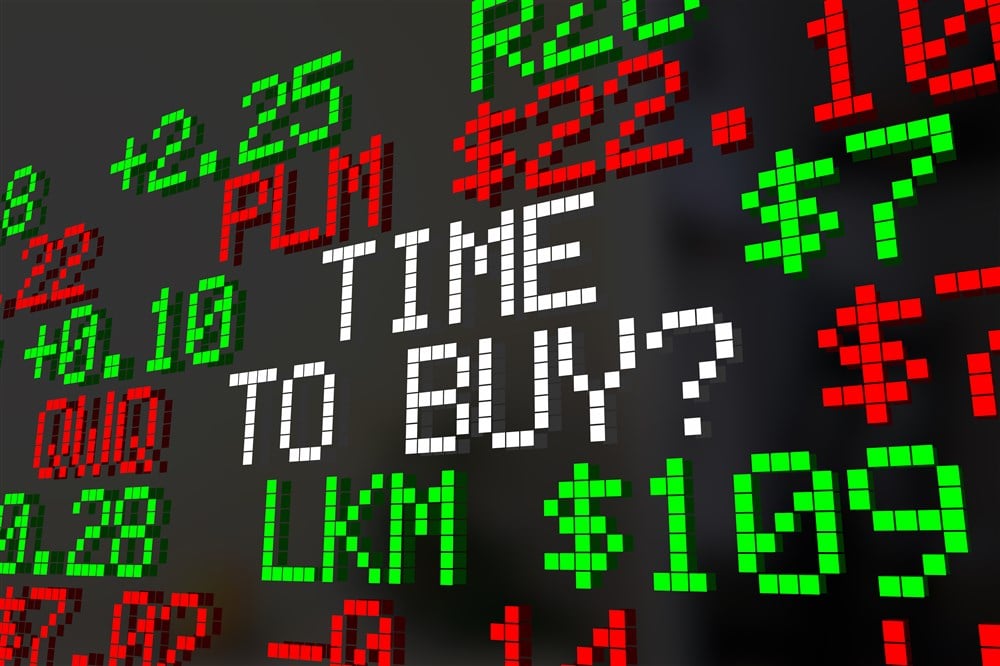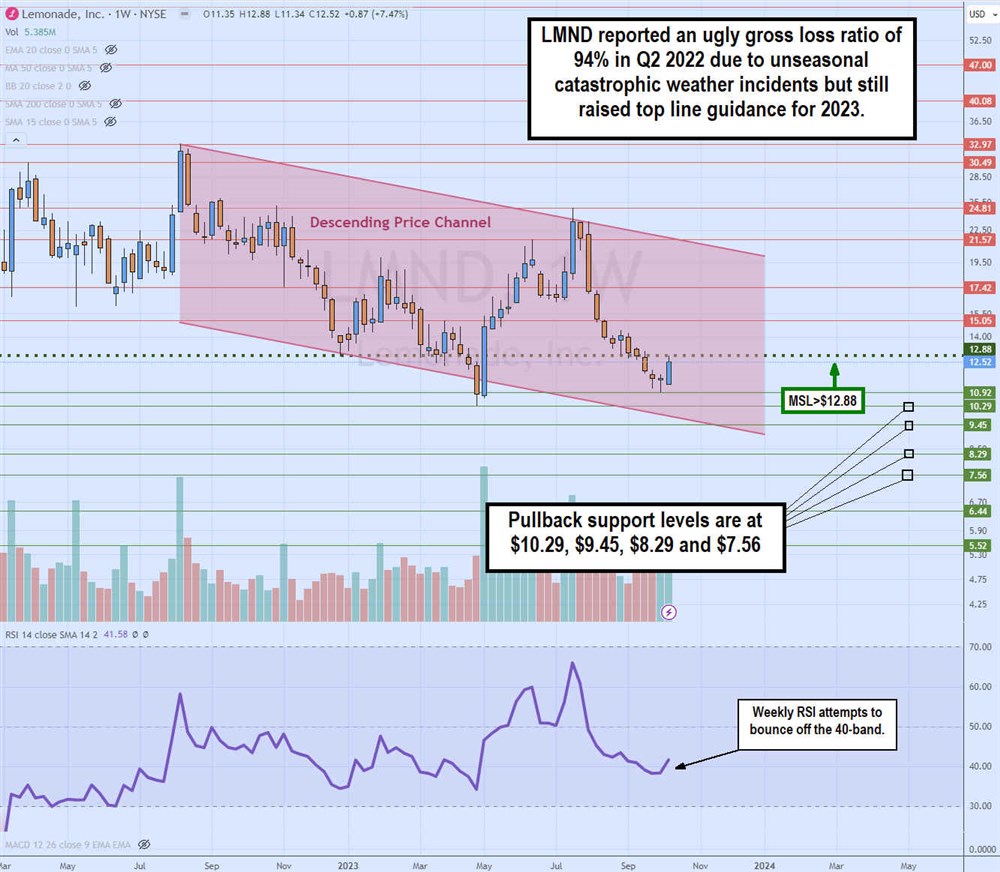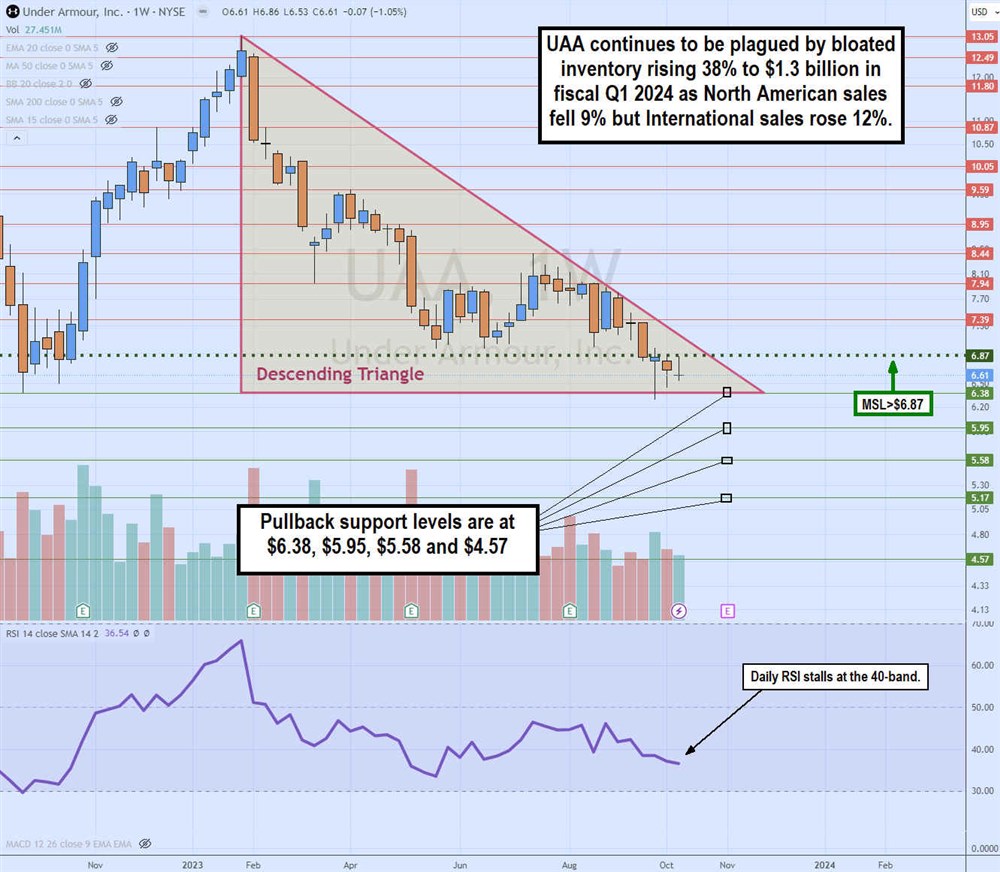
If you've ever wished that you could go back in time, then here are two stocks that saved you the trouble. Their prices are trading at levels not seen since the last six months up to a year ago. Fundamentals have arguably improved since then, but shares are trading near 52-week lows. There seems to be a disconnect that prudent and risk-tolerant investors may be able to capitalize on.
Lemonade Inc. (NASDAQ: LMND)
Lemonade is a disruptor in the insurance industry. The company integrates automation powered by artificial intelligence (AI) and machine learning (ML) to underwrite and service insurance policies. The company has expanded its insurance products from homeowners, renters, auto and life to landlord and pet insurance. The platform also sells third-party insurance products. They've made insurance purchasing fast, simple and convenient. Consumers can get insurance within minutes. Claims are also processed and paid out at lightning speed. The company still loses money but is starting to narrow the gap as revenues continue to swell.
Proving the Critics Wrong
Lemonade has faced an uphill battle against the incumbent centuries-old insurance giants. These behemoths claim that automation can't replace human actuaries that perform the art of managing risk when underwriting policies. However, Lemonade is starting to prove that AI may prove to be the edge. On top of its 20% YoY customer growth to 1.9 million, its dollar retention rate improved to 87%, above the industry average of 84%. The dollar retention rate (DRR) is the percentage of revenues that are retained from existing customers YoY. It is a metric that indicates how well an insurer retains its customers. Premium growth also rose 24% YoY to $360 per customer.
Synthetic Agents
Rather than hiring insurance agents to acquire customers, Lemonade practices using synthetic agents to gain the benefits of insurance agents without actually having them. This is done with a partnership with investment firm General Catalyst. General Catalyst pays 80% of Lemonade's customer acquisition costs in exchange for a 16% commission on premiums for new customers it attains for Lemonade for the first two to three years.
Lemonade benefits from this by closing the 'cash flow gap' by advancing 80% of its growth spend monthly. By maintaining a direct relationship with the customer rather than through a middleman. Lemonade also keeps the premiums after the initial split period with General Catalyst, rather than having to pay an agent commissions for the duration of the policy. Synthetic Agents are time shifters. They align distribution cash flows with incoming premium collections.
Losing to Win
Lemonade reported Q2 2023 losses of 97 cents per share, beating estimates by six cents. Revenues rose 109.2% YoY to $104.6 million, beating the $97.58 million consensus analyst estimates. In-force premiums were $687 million in the quarter, up 50% YoY. Total customers rose 21% YoY to 1,906,408. Gross earned premium rose 53% YoY to $164 million. Adjusted EBITDA loss was $53 million and net loss was $67 million in the quarter.
Ugly Rising Gross Loss Ratio
Gross loss ratio rose 8% to 94%, which is troubling. The gross loss ratio is how much of its premiums are paid out in claims. The quarter saw unseasonable weather catastrophes (CATs). Traditionally, Q1 and Q4 are the lowest loss quarters for property in the U.S. and Q2 and Q3 are the highest due to weather CATs from hurricanes to wildfires.
More common and less studied severe connective stores (SCS) including hail, tornadoes, thunderstorms, and straight-line winds, were significant in Q2 2023. The first half of 2023 was one of history's worst SCS-related insurance loss periods. Luckily, its reinsurance was able to offset the effects. CAT-related losses were responsible for 21 points of its gross loss ratio. The ex-CAT gross loss ratio was in the low 70s.
Upside Guidance
The company is tightening its processes to drop unprofitable policies and customers and measures to reduce claim costs. The company stated that California approved a 30% increase in homeowner insurance rates and a 23% increase in pet insurance rates. The higher premiums will register on its loss ratio as new rates "earn in" over the coming quarters. Lemonade raised its Q3 2023 revenues to $102 million to $104 million versus $101.98 consensus analyst estimates. It raised full-year 2023 revenues to $403 to $408 million versus $397.72 analyst estimates.
Lemonade analyst ratings and price targets are at MarketBeat. Lemonade peers and competitor stocks can be found with the MarketBeat stock screener.

Weekly Descending Price Channel
The weekly candlestick chart for LMN shows a descending price channel that commenced after peaking at $32.97 in August 2022, hitting a low of $10.29 in April 2023. LMND continues to make lower highs and lower lows. It formed a weekly market structure low (MSL) trigger at $12.88. The weekly relative strength index (RSI) is attempting to bounce off the 40-band. Pullback supports sit at $10.29, $9.45, $8.29 and $7.56.
Under Armour Inc. (NYSE: UAA)
Athletic apparel and footwear maker Under Armour has seen its shares collapse to 52-week lows despite the upside results for competitor Nike Inc. (NYSE: NKE) and rally in Lululemon Athletica Inc. (NASDAQ: LULU) shares. The company has been plagued with inventory issues stemming from a weak 2022 holiday season. As the 2023 holiday season approaches, investors are concerned about another round of heavily promotional discounts to convince consumers to buy their wares. The company ended its Q2 2023 with $1.3 billion in inventory, up 38% YoY. This reversed margins back down to 46.1%. This compared to 50% margin levels for Nike and nearly 60% margins for Lululemon. Its Q3 2023 results are expected to be reported on November 2, 2023.
Attacking Inventory Bloat
To improve gross margins, inventory levels need to be cut down. Under Armour's new CEO, Stephanie Linnartz, is focused on improving margins but needs the bloated North American inventory problem to get resolved. Gross margins fell 60 bps to 46.1%, driven by higher promotions partially offset by improved supply chain benefits and lower freight expenses.
Stabilization
On August 8, 2023, Under Armour reported fiscal Q1 2024 EPS of two cents, beating consensus analyst estimates for a loss of two cents, by four cents. Net income was $9 million. Revenues fell 2.4% YoY to $1.32 billion, beating consensus estimates of $1.29 billion. Wholesale revenues fell 6% to $742 million, and direct-to-consumer (DTC) revenue rose 4% to $544 million. eCommerce saw an increase as it represented 40% of total DTC business. Apparel sales fell 5% to 825 million, but footwear revenues rose 5% to $364 million, and accessories rose 1% to $98 million. The company ended the quarter with $704 million in cash and cash equivalents and a $1.1 billion credit revolver.
Weak North America, Strong International Sales
North America felt the brunt of the weakness, with revenues down 9% YoY to $827 million. International revenue was the shining point as revenues climbed 12% YoY to $485 million, comprised of a 10% rise in EMEA, a 14% rise in Asia-Pacific and a 13% rise in Latin America.
Reaffirmed Guidance
Under Armour reaffirmed fiscal full-year 2024 guidance of EPS between 47 cents to 51 cents versus 49 cents consensus analyst estimates. Revenues are expected to be flat to up slightly YoY. Operating income is expected between $310 million to $330 million. CapEx is expected between $250 million to $270 million.
Protect This House Strategy
CEO Linnartz pointed out the new turnaround strategy. She commented, "As we continue executing against our Protect This House 3 strategic priorities, including our prioritization of North America, we have taken several important steps. These steps include leadership changes, amplifying storytelling to drive global brand heat, and optimizing our product engine to deliver elevated design and groundbreaking innovations that athletes covet."
Under Armour analyst ratings and price targets are at MarketBeat.

Weekly Descending Triangle
The weekly candlestick chart on UAA shows the descending triangle pattern. The flat-bottom horizontal trendline support is at $6.38. The weekly MSL buy triggers on a breakout through $6.87. The RSI slipped under the 40-band. Pressure is building heading into its November 2, 2023, earnings release, as inventory reduction will be a top concern heading into the holiday shopping season. Pullback support levels are at $6.38 flat-bottom trendline support, $5.95, $5.58 and $4.57.














